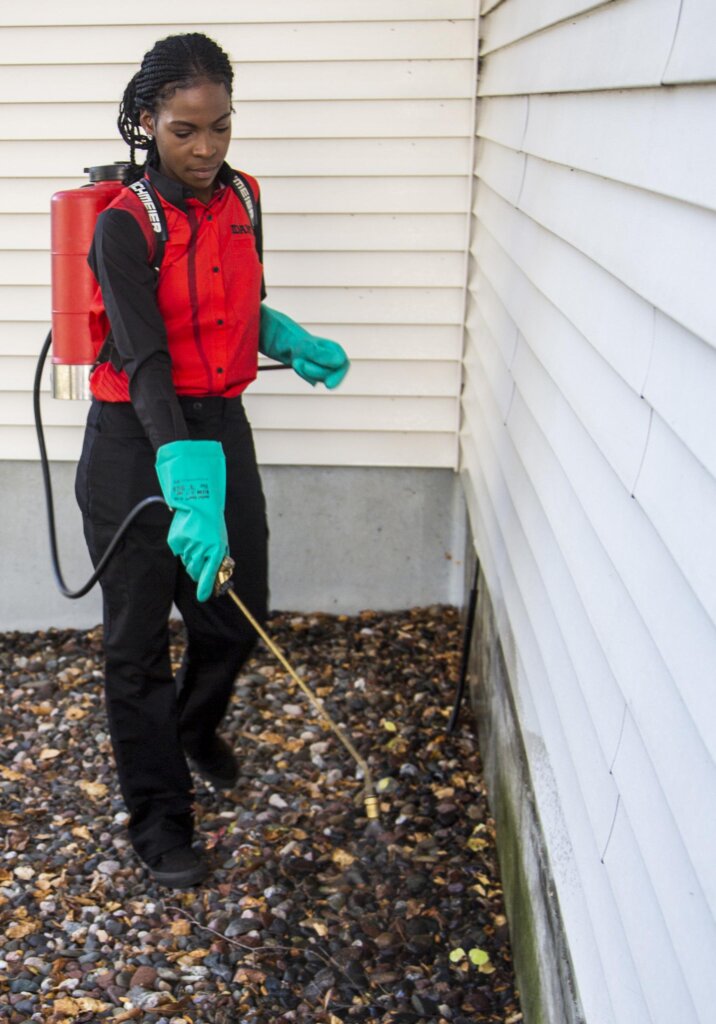Dependable A1 Bed Bug Exterminator Charlotte - Do Away With Bed Bugs Rapid
Bed Bug Therapy Malfunction: Contrasting Chemical Vs. Non-Chemical Solutions
In the world of parasite control, specifically when taking care of the persistent problem of bed pests, the option in between chemical and non-chemical therapy services can be a pivotal one. Both strategies provide unique benefits and disadvantages, affecting factors such as performance, safety and security factors to consider, and overall expense. By checking out the nuanced details of each technique, a more clear understanding of which course to pursue in attending to a bed pest invasion can be attained.
Effectiveness of Chemical Treatments
Chemical treatments for bed pest infestations have been commonly acknowledged for their powerful and rapid efficacy in removing these bugs. When considering the efficiency of chemical treatments, it is crucial to recognize that they can supply a fast and thorough service to a bed insect issue. Expert pest control specialists commonly rely on pesticides to target bed bugs at various stages of their life cycle, including nymphs, grownups, and eggs. These chemicals commonly work by disrupting the bed bugs' nervous system, bring about paralysis and ultimate death.
In addition, chemical therapies have the advantage of offering recurring effects, meaning that they can continue to eliminate bed bugs also after the preliminary application. This recurring action is particularly beneficial in combating any kind of possible re-infestations. Additionally, the quick action of chemical treatments can bring relief to people facing serious bed pest infestations, allowing them to gain back control of their space swiftly.
Safety And Security Interest In Chemical Solutions
When utilizing chemical services for bed insect treatment is making certain the security of residents and the atmosphere,One crucial aspect that needs cautious factor to consider. While chemical therapies can be reliable in getting rid of bed bugs, they might present risks if not managed effectively. Among the main safety and security interest in chemical options is the possible injury they can cause to human health and wellness. Exposure to particular chemicals utilized in bed pest therapies can cause respiratory system problems, skin irritation, or various other negative reactions, especially in individuals with pre-existing conditions or level of sensitivities. In addition, inappropriate application or dose of chemical pesticides can lead to poisonous residues remaining in the treated location, positioning lasting health threats to residents.
Furthermore, the environmental effect of chemical remedies is one more significant consideration. Some chemicals utilized in bed bug treatments might be dangerous to helpful bugs, wild animals, and ecological communities if they leach right into the soil or water supply. It is necessary to make use of chemical therapies sensibly, following security standards, and thinking about much less poisonous alternatives to minimize these risks and make sure the efficient and safe monitoring of bed insect problems.
Benefits of Non-Chemical Approaches
Taking into consideration the potential safety worries and ecological influence connected with chemical services for Visit Your URL bed insect treatment, exploring non-chemical techniques provides an encouraging choice with numerous distinct benefits. Non-chemical methods provide a safer option for families, particularly those with people, family pets, or children sensitive to extreme chemicals. These strategies remove the threats of direct exposure to toxic substances, decreasing the potential for adverse health and wellness results. Furthermore, non-chemical therapies are eco-friendly, as they do not add to air or water contamination, making them a sustainable choice for pest control.
Additionally, non-chemical options can be reliable in targeting bed pests, including hard-to-reach areas where chemical therapies might not pass through. Techniques such as warmth treatment, vacuuming, steam cleaning, and mattress encasements provide comprehensive removal without making use of unsafe chemicals. Furthermore, non-chemical strategies can be less turbulent, calling for very little prep work and allowing for quicker reentry into treated areas. Overall, selecting non-chemical bed pest treatment techniques not only prioritizes safety and security and environmental management but also makes sure efficient and detailed insect control.
Limitations of Non-Chemical Treatments

In addition, non-chemical treatments usually require several applications to attain effective elimination. This can be time-consuming and may not constantly assure complete removal of all bed bugs and their eggs, especially in hard-to-reach or hidden locations.
In addition, the success of non-chemical treatments heavily relies upon proper application and thoroughness, which can be testing for individuals without expert competence. Poor application of non-chemical approaches may cause insufficient eradication, resulting in consistent infestations and the requirement for added therapies.
Therefore, while non-chemical treatments have their benefits, it is necessary to recognize these limitations and consider them when determining the most reliable technique for taking care of bed pest invasions.
Price Contrast: Chemical Vs. Non-Chemical Options
Provided the limitations associated with non-chemical therapies, an important element to examine in the context of bed insect management is the expense comparison in between chemical and non-chemical alternatives. In comparison, non-chemical treatments like warm therapy or vapor can be a lot more costly, with prices ranging from $1,000 to $6,000 for a whole home. While the initial expense of chemical treatments might appear lower, numerous therapies might be needed to totally eliminate the infestation, potentially raising the general cost.
Verdict

Thinking about the possible safety and security problems and ecological influence connected with chemical options for bed insect therapy, discovering non-chemical approaches presents an appealing choice with a number of distinct advantages.Given the restrictions linked with non-chemical treatments, a necessary element to review in the context of bed bug administration is the price comparison in between chemical and non-chemical options. In contrast, non-chemical treatments like warmth therapy or steam can be extra expensive, with expenses varying from $1,000 to $6,000 for a whole home. While the initial expense of chemical treatments might seem lower, several treatments may be called for to fully remove the invasion, possibly boosting the overall price.In conclusion, when comparing chemical and non-chemical bed bug treatment options, it is necessary to consider efficiency, safety and security, advantages, constraints, and cost.